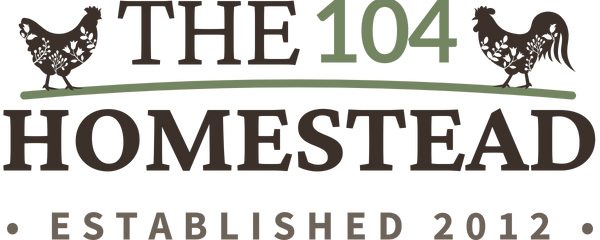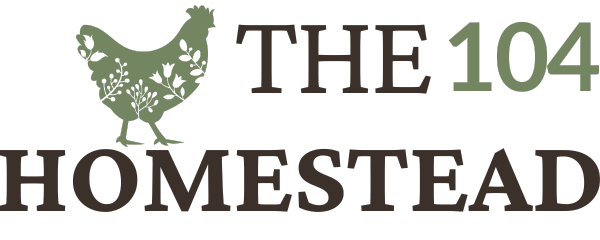Homemade Teat Wash for Goats & Cows
Try this simple and easy homemade udder and teat wash for goats and cows. It contains no harsh ingredients like bleach.
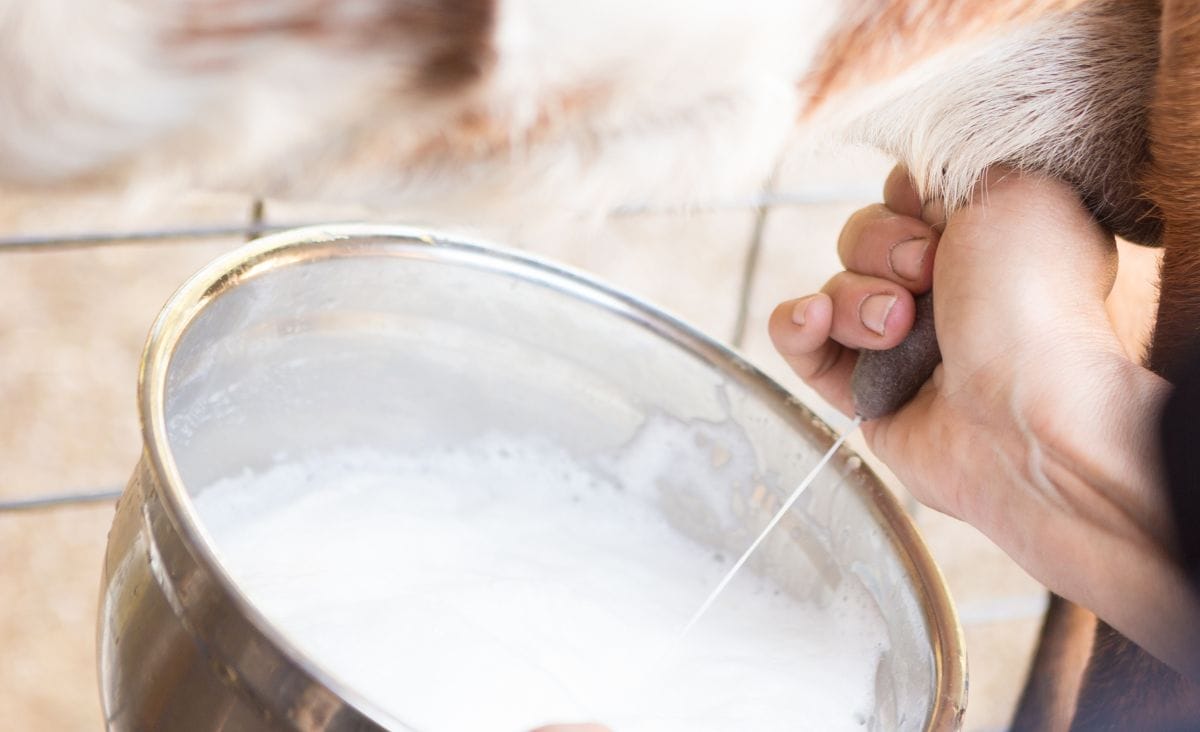
Cleanliness is an important factor when you are milking a goat or cow. It’s important to keep the milk clean. Bits of hay, dirt, or whatever else your dairy animal decides to lie down in doesn’t need to end up in your milk bucket. Ick! Keeping the pen clean helps, but rain and mud happens. To ensure clean milk (and delicious), the dairy animal’s udder and teats need to be thoroughly washed.
Why We Don’t Use Commercial Cleansers
There are a lot of different teat washes out there, a lot of them contain bleach. I just can’t wrap my head around washing a goat’s udder and teats with bleach. I understand the reasoning, to kill all the bacteria that could potentially cause a problem. Bleach, even diluted, is harsh. In my opinion, the teats and udder of a dairy animal seem like a sensitive area to be washing with a bleach solution. A teat wash can be effective when made with gentler ingredients. Yay!!!
Instead of using a bleach solution on my goats, I make my own teat wash. The teat wash has some requirements, it needs to kill the bacteria that could potentially get into my milk bucket and needs to prevent mastitis. It also needs to be gentle to the goats and safe, in case my kids or pets would happen to get into the teat wash.
The Power of Essential Oils
This recipe is very simple and easy to mix up. Essential oils are the perfect solution for a small milking operation like ours. We use essential oils with our chickens and dog as well. Lavender oil is known for its anti-bacterial properties. Tea tree oil is anti-bacterial, anti-fungal and anti-viral. Lavender and tea tree oil smell a lot nicer than bleach, which is a major bonus! Castile soap is a very gentle, mild soap. It is added as an additional cleansing agent.
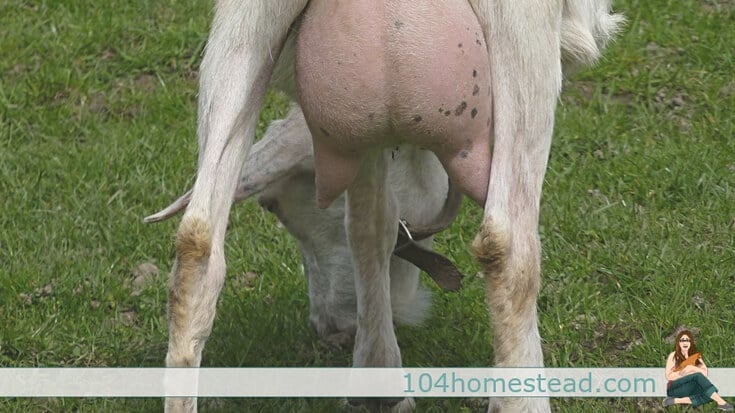
My Homemade Herbal Teat Wash Recipe
To make your own gentle homemade teat wash, you will need…
- 20 drops lavender oil
- 10 drops tea tree oil
- 2 tbsp castile soap (I use Dr. Bronners, but any castile soap will do)
Put oils and soap in a quart size spray bottle. Fill bottle up with warm water and shake well.
To Use This Teat Spray
Spray udder and teats with teat spray. Wipe off with a clean cloth until clean. Milk as usual (what’s your technique?) and use the teat spray once again on the teats when milking is complete. A drop of milk left on the teat could cause bacteria to enter into the udder, causing infection.
Important Notes
- Store the homemade teat wash in a cool, dark place when not in use to preserve the potency of the essential oils.
- Shake the bottle well before each use to ensure the ingredients are properly mixed.
- Use within a reasonable time frame to ensure freshness and effectiveness.
If you’ve found value in this blog post and enjoyed reading it, why not share it with your Pinterest community? Pin the image below and spread the love!
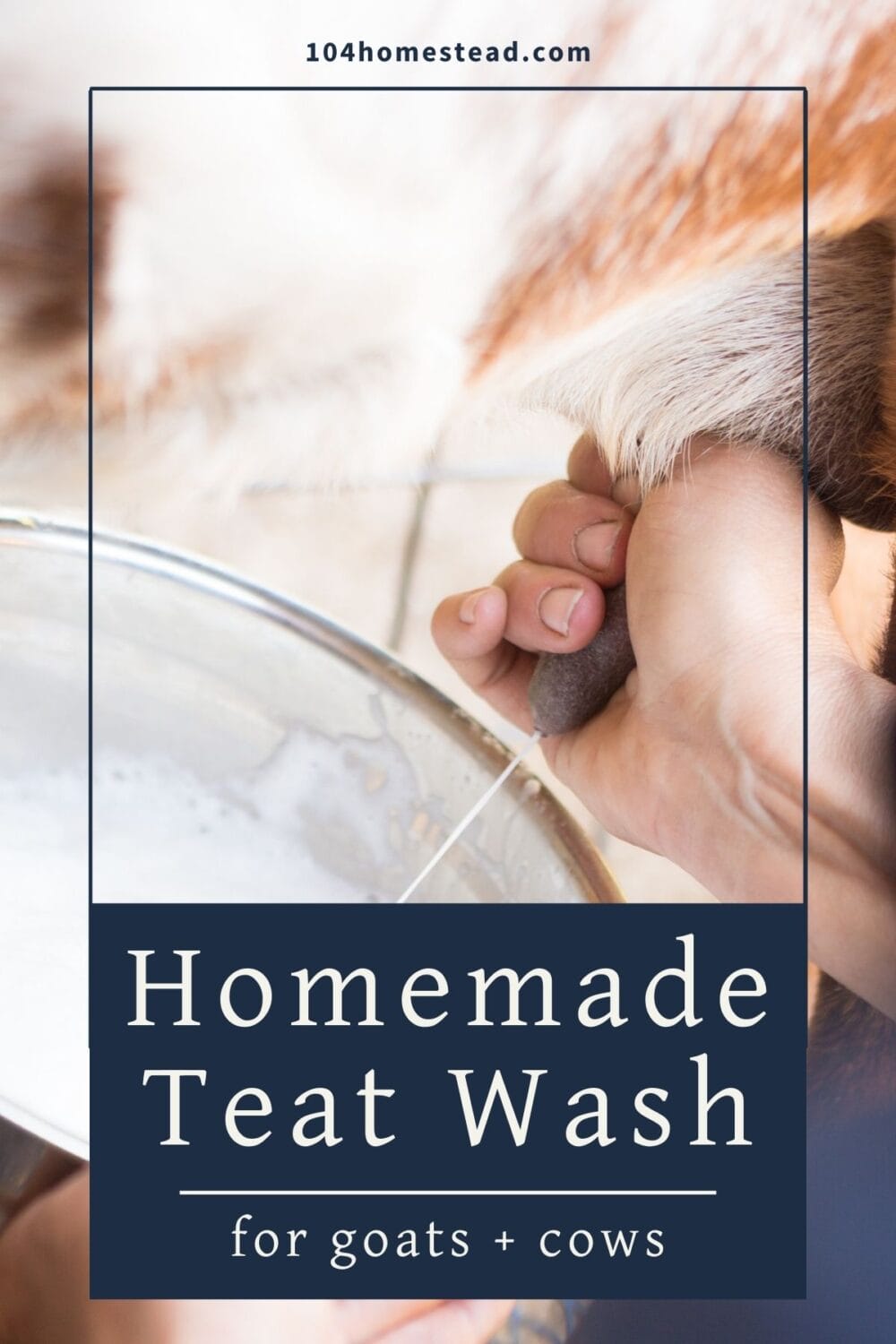
I have been using this teat spray for 5 years now and have not had a case of mastitis nor any contaminated/bad milk in that time.
Happy milking!
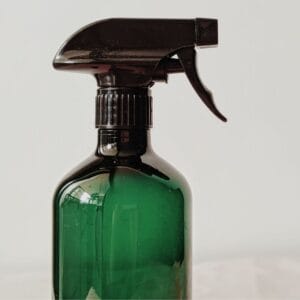
Natural Teat Spray Blend
This post may contain paid links. If you make a purchase using the links in this recipe, I may earn a commission.
Equipment
- 1 Spray Bottle quart
Ingredients
- 20 drops Lavender Essential Oil
- 10 drops Tea Tree Essential Oil
- 2 tbsp. Castile Soap
Instructions
- Put oils and soap in a quart size spray bottle.
- Fill bottle up with warm water and shake well.
- Spray udder and teats with teat spray.
- Wipe off with a clean cloth until clean.
- Milk as usual.
- Use the teat spray again on the teats when milking is complete.
